The signs of adolescent bipolar disorder can often be difficult to identify. Once an individual identifies the symptoms and side effects of adolescent bipolar disorder, the next step in the recovery journey become clear.
Understanding Bipolar Disorder
Learn about adolescent bipolar disorder
While bipolar disorder is widely known to impact the lives of adult men and women, this mental health condition can manifest during adolescence and significantly disrupt a young person’s ability to carry out day to day tasks and to develop into a healthy well-functioning adult.
The cornerstone to this illness is drastic shifts in mood that vary greatly. Depressive episodes can cause an adolescent to experience a decrease in motivation, decreased need for sleep, loss of energy, appetite changes, a general negative disposition, sadness, and tearfulness. Conversely, teens with bipolar disorder also endure periods of mania, which can include increased emotional excitability, poor impulse control, less need for sleep, diminished appetite, and racing thought processes. If left untreated, these mood changes can significantly impact a teen’s academic performance, relationships with peers, connections with loved ones, self-esteem, and ability to make good decisions for him or herself.
In most instances, medication along with a blend of therapies is needed to help a teen learn to manage this illness more effectively. Through treatment that is focused on the needs of adolescents and equipped to instill the skills needed to cope with bipolar disorder symptoms, a young person with this illness can heal, become well again, and learn to prevent the symptoms of bipolar disorder from hindering his or her ability to achieve and be successful.
Statistics
Adolescent bipolar disorder statistics
According to the National Institute of Mental Health, or NIMH, an adolescent with a mother or father who suffers from bipolar disorder has a 15% to 30% chance of also struggling with this illness. However, if both parents of a young person meet diagnostic criteria for bipolar disorder, the odds of that youth eventually struggling with bipolar disorder jump to 50% to 75%. And even though 25 is the average age in which a person may come to experience symptoms synonymous with this disorder, there are reports of numerous children and adolescents who have battled bipolar disorder well before that median age.
Causes and Risk Factors
Causes and risk factors for adolescent bipolar disorder
Experts in the field of mental health have spent a great deal of time researching the possible causes and risk factors that could make a person more vulnerable to experiencing bipolar disorder. Among their findings, the following are concepts that are widely agreed upon by those who have studied the etiology of bipolar disorder:
Genetic: It is quite probable for an adolescent to inherit bipolar disorder from his or her parent or parents. In fact, research shows that the majority of those who grapple with bipolar disorder have a family history of this illness or depression, which can increase the possibility of a teen experiencing similar challenges on day as well.
Environmental: Especially in instances in which a young person has a family history of bipolar disorder, certain environmental influences can trigger the onset of this mental health concern. The abuse of certain substances, experiencing a trauma, bearing witness to crime, chaos, or violence, and enduring a great deal of stress can sometimes bring on bipolar disorder symptoms for an individual. Given this fact, it can be said that the places in which one spends most of his or her time can impact the onset of this illness and whether or not bipolar disorder will impact a young person’s life.
Risk Factors:
- Family history of bipolar disorder
- Living in an urban area
- Personal history of substance abuse
- Personal history of trauma
- Residing in a high stress or high crime area
Signs and Symptoms
Signs and symptoms of adolescent bipolar disorder
Depending on the type of episode that an individual is experiencing at the time, whether depressive or manic, the telltale signs of bipolar disorder may not be obvious at first glance. During an episode of depression, a teen may be mistakenly diagnosed with depression and may not receive the proper care if treatment is sought. For this reason, parents, guardians, and other loved ones should note the presence of the following symptoms if they are occurring and report them during an assessment for services:
Behavioral symptoms (manic episode):
- Engaging in risky behaviors
- Fidgeting
- Jumping from topic to topic during conversations
- Rapid speech
- Restlessness
Behavioral symptoms (depressive episode):
- Expressions of self-loathing
- Loss of interest in once enjoyable activities
- Missing school
- Self-harm
- Tearfulness
Physical symptoms (manic episode):
- Appetite changes
- Increase in energy
- Increased desire for sexual activity
- Less need for sleep
- Teeth grinding
Physical symptoms (depressive episode):
- Appetite changes
- Decreased energy
- Hypersomnia
- Weight changes
Cognitive symptoms (manic episode):
- Overconfidence
- Poor impulse control
- Racing thoughts
Cognitive symptoms (depressive episode):
- Difficulty concentrating
- Impaired decision-making skills
- Poor focus
- Poor judgment
- Suicidal ideation
- Vivid disturbing nightmares
Psychosocial symptoms (manic episode):
- Excitability
- Inflated self-esteem
- Irritability
- Mood swing
Psychosocial symptoms (depressive episode):
- Anxiety
- Guilt
- Hopelessness
- Low self-esteem
- Shame
- Worthlessness
Effects
Effects of adolescent bipolar disorder
The longer an adolescent grapples with bipolar disorder without treatment, the more serious and permanent the resulting effects can be. If, however, a teen receives support for this condition, the following can be avoided:
- Difficulties making and maintaining healthy relationships
- Family discord
- Onset of other mental health concerns
- Physical injury as a result of impulsive behaviors
- Self-harm
- Social isolation
- Substance abuse that could lead to addiction
- Substandard academic performance
- Suicidal ideation
- Worsening of bipolar disorder symptoms
Co-Occurring Disorders
Adolescent bipolar disorder and co-occurring disorders
All too often, youth diagnosed with bipolar disorder meet certain diagnostic criteria for other illnesses that are present at the same time. Among the disorders that are known to occur alongside bipolar disorder, the following are the most common:
- Anxiety disorders
- Attention-deficit/hyperactivity disorder (ADHD)
- Conduct disorder
- Intermittent explosive disorder (IED)
- Oppositional defiant disorder (ODD)
- Substance use disorders


